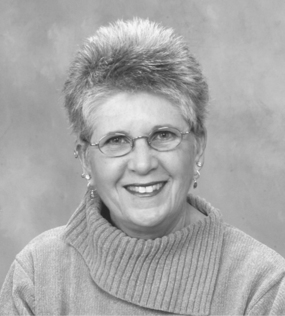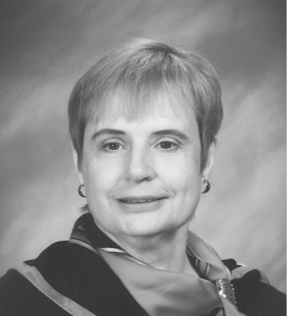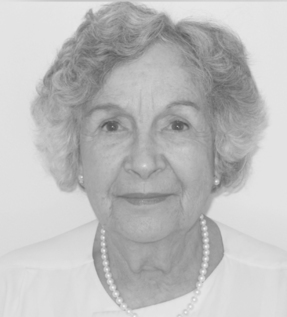Ann M. Schreier and Nellie S. Droes Burke became interested in the concept of chronic sorrow during her master’s degree program while engaged in a clinical practicum at the Child Development Center of Rhode Island Hospital. While working there with children with spina bifida and their parents, she developed the clinical hunch that the emotions displayed by the parents were consistent with chronic sorrow as first described by Olshansky (1962). Her master’s thesis, The Concerns of Mothers of Preschool Children with Myelomeningocele, identified emotions similar to chronic sorrow. She then developed the Burke Chronic Sorrow Questionnaire for conducting her doctoral dissertation research, Chronic Sorrow in Mothers of School-Age Children With Myelomeningocele. The NCRCS based the middle range Theory of Chronic Sorrow on two main sources. The work of Olshansky in 1962 was cited as the basis of the original concept of chronic sorrow (Eakes, Burke, & Hainsworth, 1998). Lazarus and Folkman’s (1984) model of stress and adaptation formed the foundation for the conceptualization of how persons cope with chronic sorrow. The concept of chronic sorrow originated with the work of Olshansky in 1962 (Lindgren, Burke, Hainsworth, & Eakes, 1992). The NCRCS theorists cite Olshansky’s observations of parents with mentally retarded children that indicated these parents experienced recurrent sadness and his coining the term chronic sorrow. This original concept was described as “a broad, simple description of psychological reaction to a tragic situation” (Lindgren et al., 1992, p. 30). During the 1980s, other researchers began to examine the experience of parents of children who were either physically or mentally disabled. This work validated a recurrent sadness and a never-ending nature of grief experienced by these parents. Previous to this work, grief was conceptualized as a process that resolves over time, and if unresolved, grief is abnormal according to Bowlby and Lindemann’s work (Lindgren et al., 1992). In contrast to this time-bound conceptualization, inherent in the concept of chronic sorrow is that recurrent sadness is a normal experience, according to Wikler, Wasow, and Hatfield (Lindgren et al., 1992). Burke, in her study of children with spina bifida, defined chronic sorrow as “pervasive sadness that is permanent, periodic and progressive in nature” (Hainsworth, Eakes, & Burke, 1994, p. 59). The NCRCS did not confine its theory to the existence of chronic sorrow but sought to examine the response to the grief. This group incorporated Lazarus and Folkman’s 1984 work on stress and adaptation as the basis for effective management methods described in its model (Eakes et al., 1998). The disparity encountered and the response to re-grief stimulate individual coping mechanisms. There are categories of coping styles or management. Internal coping strategies include action-oriented, cognitive reappraisal and interpersonal behaviors (Eakes et al., 1998). Thus, the middle range Theory of Chronic Sorrow extended the theoretical base of chronic sorrow to not only the experience of chronic sorrow in certain situations but also the coping responses to the phenomenon. The empirical evidence supporting NCRCS’s initial conceptual definition of chronic sorrow was derived from interviews with mothers of children with spina bifida, which Burke conducted as part of her dissertation work. Through this research, Burke was able to define chronic sorrow as a pervasive sadness and found that the experience was permanent, periodic, and potentially progressive (Eakes, Burke, Hainsworth, & Lindgren, 1993). Burke’s initial work provided the foundation for subsequent series of studies, including the basis for interview guides used in these studies. These NCRCS studies involved the following: Based on these studies, the theorists postulated that chronic sorrow occurs in any situation in which the loss is unresolved. These studies did not demonstrate consistently that the associated emotions worsened over time. However, the theorists concluded that the studies did support the “potential for progressivity and intensification of chronic sorrow over time” (Eakes et al., 1998, p. 180). The NCRCS theorists extended their studies to individuals experiencing a single loss (bereaved). They found that this population experienced these same feelings of chronic sorrow (Eakes, Burke, & Hainsworth, 1999). Based on this extensive empirical evidence, the NCRCS theorists refined the definition of chronic sorrow as the “periodic recurrence of permanent, pervasive sadness or other grief-related feelings associated with ongoing disparity resulting from a loss experience” (Eakes et al., 1998, p. 377). Using the empirical data from these series of studies, the NCRCS theorists identified primary events or situations that precipitated the re-experience of initial grief feelings. These events were labeled chronic sorrow triggers (Eakes et al., 1993). The NCRCS compared and contrasted the triggers of chronic sorrow in individuals with chronic conditions, family caregivers, and bereaved persons (Burke, Eakes, & Hainsworth, 1999). For all populations, comparisons with norms and anniversaries were found to trigger chronic sorrow. Both family caregivers and persons with chronic conditions experienced triggering with management crises. One trigger unique for family caregivers was the requirement of unending caregiving. The bereaved population reported that memories and role change were unique triggers. Action coping mechanisms were used across all subjects—individuals with chronic conditions and their caregivers (Eakes, 1993, 1995; Eakes et al., 1993, 1999; Hainsworth, 1994, 1995; Hainsworth et al., 1995; Lindgren, 1996). The examples are like distraction methods commonly used to cope with pain. For instance, “keeping busy” and “doing something fun” are given as examples of action-oriented coping (Eakes, 1995; Lindgren et al., 1992). It was found that cognitive coping was used frequently, and examples included “thinking positively,” “making the most of it,” and “not trying to fight it” (Eakes, 1995; Hainsworth, 1994; Lindgren, 1996). Interpersonal coping examples included “going to a psychiatrist,” “joined a support group,” and “talking to others” (Eakes, 1993; Hainsworth, 1994, 1995). Emotional strategy examples included “having a good cry” and expressing emotions (Eakes et al., 1998; Hainsworth, 1995). A management strategy was labeled effective when a subject described it as helpful in decreasing feelings of re-grief. External management was described initially by Burke as interventions provided by health professionals (Eakes et al., 1998). Healthcare professionals assist affected populations to increase their comfort through roles of empathetic presence, teacher-expert, and caring and competent professional (Eakes, 1993, 1995; Eakes et al., 1993, 1999; Hainsworth, 1994, 1995; Hainsworth et al., 1995; Lindgren, 1996). In summary, an impressive total of 196 interviews resulted in the middle range Theory of Chronic Sorrow. The theorists summarized a decade of research with individuals with chronic sorrow and found that this phenomenon frequently occurs in persons with chronic conditions, in family caregivers, and in bereaved persons (Burke et al., 1999; Eakes et al., 1998).
Theory of Chronic Sorrow
CREDENTIALS OF THE THEORISTS
Georgene Gaskill Eakes
Mary Lermann Burke
THEORETICAL SOURCES
USE OF EMPIRICAL EVIDENCE
Chronic Sorrow
 Individuals with cancer (Eakes, 1993), infertility (Eakes et al., 1998), multiple sclerosis (Hainsworth, Burke, Lindgren, & Eakes, 1993; Hainsworth, 1994), and Parkinson’s disease (Lindgren, 1996)
Individuals with cancer (Eakes, 1993), infertility (Eakes et al., 1998), multiple sclerosis (Hainsworth, Burke, Lindgren, & Eakes, 1993; Hainsworth, 1994), and Parkinson’s disease (Lindgren, 1996)
 Spouse caregivers of persons with chronic mental illness (Hainsworth, Busch, Eakes, & Burke, 1995), multiple sclerosis (Hainsworth, 1995), and Parkinson’s disease (Lindgren, 1996)
Spouse caregivers of persons with chronic mental illness (Hainsworth, Busch, Eakes, & Burke, 1995), multiple sclerosis (Hainsworth, 1995), and Parkinson’s disease (Lindgren, 1996)
 Parent caregivers of adult children with chronic mental illness (Eakes, 1995)
Parent caregivers of adult children with chronic mental illness (Eakes, 1995)
Triggers
Management Strategies
![]()
Stay updated, free articles. Join our Telegram channel

Full access? Get Clinical Tree


Nurse Key
Fastest Nurse Insight Engine
Get Clinical Tree app for offline access



